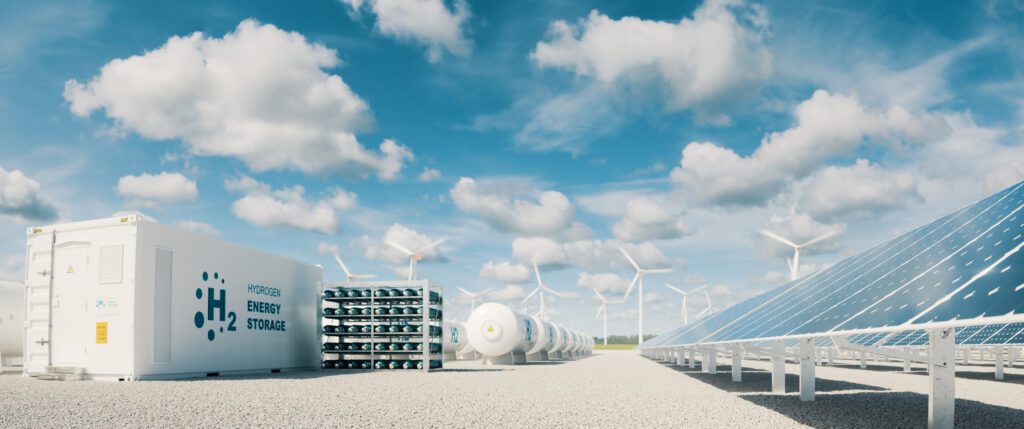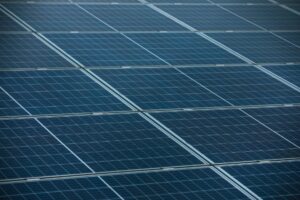Alberta 
Varcoe: As global natural gas prices soar, Alberta producers face ‘astronomical’ discount
 Western Canadian natural gas producers are used to seeing volatility and a discount at the key Alberta hub relative to American markets in recent years. The differential between the U.S. Henry Hub in Louisiana and Alberta’s AECO price narrowed earlier this year but has come back with a vengeance this summer. Companies and analysts are citing familiar issues for its unwelcome return: a lack of available pipeline capacity in the region, summer maintenance work on existing transportation networks and rising output in Western Canada. The deep discount will cost Alberta taxpayers as royalties are based on the sale price of the commodity. King conservatively estimates lost industry revenue because of wide discounts at more than $1 billion per month for July and August.
Western Canadian natural gas producers are used to seeing volatility and a discount at the key Alberta hub relative to American markets in recent years. The differential between the U.S. Henry Hub in Louisiana and Alberta’s AECO price narrowed earlier this year but has come back with a vengeance this summer. Companies and analysts are citing familiar issues for its unwelcome return: a lack of available pipeline capacity in the region, summer maintenance work on existing transportation networks and rising output in Western Canada. The deep discount will cost Alberta taxpayers as royalties are based on the sale price of the commodity. King conservatively estimates lost industry revenue because of wide discounts at more than $1 billion per month for July and August.
Source: The Edmonton Journal
Electricity Prices for Alberta
The Alberta power pool price averaged 25.775 cents per kWh in August 2022. This price is 11.62 cents higher than last month’s average. The pool price has averaged 12.120 cents per kWh over the last 12 months.
As of September 5, 2022, the forward market was predicting electricity prices for the calendar years of 2022, 2023, 2024, 2025, 2026, 2027, and 2028. These prices are 14.688, 10.700, 7.900, 7.300, 6.650, 6.850, and 6.850 cents per kWh respectively.
Gas Prices for Alberta
Direct Energy’s gas rate for August 2022 was $5.797 per GJ in Alberta. The September 2022 rate has been set at $6.146 per GJ. Alberta gas prices have averaged $5.652 per GJ over the last 12 months.
As of September 5, 2022, the forward market was predicting gas prices for the calendar years of 2022, 2023, 2024, 2025, 2026, and 2027. These prices are 7.37, 5.98, 5.08, 5.11, 5.07, and 5.34 cents per GJ respectively.
British Columbia 
Air conditioning is a necessity, not a luxury — despite the emissions and energy costs, advocates say

B.C. planners and policy analysts say the benefits of air conditioners during extreme heat situations are very clear — and concerns over their environmental and financial impact show misplaced priorities. During last year’s deadly heat dome in B.C., authorities found over two-thirds of the 619 people that died did not have air conditioning in their homes. With extreme heat events more likely in future due to climate change, advocates are asking the province to provide vulnerable people with air conditioning units. Data shows air conditioner use is already on the rise in B.C., leading to an associated energy and emissions toll — including one instance of the province’s public housing authority switching off cooling in some of its properties to save energy.
Source: CBC News
Ontario 
Ontario energy minister asks for early report exploring a halt to natural gas power generation
Ontario’s energy minister, Todd Smith, says he doesn’t think the province needs any more natural gas generation and has asked the electricity system regulator to speed up a report exploring a moratorium. Demand from growth in electric vehicles and electrifying public transportation is expected to rise much more quickly starting around 2035. At that time, the projected gap between needed and available electricity is expected to hit 5,000 megawatts — enough to power five million homes — during the summer, even if all current power producers renew their contracts.
Source: CBC
Electricity Prices for Ontario
The Hourly Ontario Energy Price (HOEP) was an average of 8.075 cents per kWh in August 2022. This price is 2.306 cents higher than last month’s 5.769 cents per kWh. The twelve-month moving average was 4.107 cents per kWh up to August 2022.
The Actual Rate for the Global Adjustment rate Class B for July 2022 was set at 4.008 cents per kWh. The Global Adjustment is an additional charge paid by non-regulated customers. (Source: IESO)
Saskatchewan 
SaskPower and Southwest Power Pool Sign Agreement to Increase Transmission Capacity
SaskPower has signed a 20-year agreement with the Southwest Power Pool (SPP) to expand the transmission line capacity between Saskatchewan and the United States. The increased capacity will enable the import and export of up to 650 megawatts (MW) of electricity starting in 2027. Expanding transmission capacity to the U.S. will also improve reliability in the event of planned or unplanned outages at SaskPower facilities and makes it possible for Saskatchewan to export excess power into the pool, which would create revenue opportunities.
Source: SaskPower
Manitoba 
New Rebate: Efficiency Manitoba’s Solar Energy Program
 A solar photovoltaic (PV) system is a sustainable way to power your home or business and lower your energy bills but installing one can be quite a big investment. depending on the size of your home or business and your electricity needs, you will likely want to look into the support available to help you pay for a new system. Through Efficiency Manitoba’s recently announced Solar Rebate Program, you can access $0.50 per direct current (DC) watt installed on homes and businesses connected to Manitoba Hydro’s grid, up to a maximum of $5,000 per home and $25,000 per business.
A solar photovoltaic (PV) system is a sustainable way to power your home or business and lower your energy bills but installing one can be quite a big investment. depending on the size of your home or business and your electricity needs, you will likely want to look into the support available to help you pay for a new system. Through Efficiency Manitoba’s recently announced Solar Rebate Program, you can access $0.50 per direct current (DC) watt installed on homes and businesses connected to Manitoba Hydro’s grid, up to a maximum of $5,000 per home and $25,000 per business.
Source: Manitoba Chamber of Commerce
New Brunswick 
Atlantic Canada Could Become A Global Green Hydrogen Hub
A major movement on the hydrogen front was on August 23 when Prime Minister Justin Trudeau and German Chancellor Olaf Scholz signed a declaration of joint intent between Canada and Germany, where Canada pledged to help Germany break its reliance on natural gas by producing and shipping hydrogen to Germany. The Canada-Germany Hydrogen Alliance was predated by the Atlantic Hydrogen Alliance, an industry-led group of 60 Atlantic Canadian companies that have been supporting the development of economically viable green hydrogen in Atlantic Canada that was founded in October 2021. Atlantic Canada’s many clean energy resources – wind turbines, New Brunswick’s burgeoning market for small modular nuclear reactors, and hydroelectric resources across the region – are the “perfect mix,” to enable Atlantic Canada to become a hydrogen hub.
Prince Edward Island 
Home Energy Assessments
A home energy assessment, also known as an energy audit, can help save energy and is required for efficiency PEI Home Insulation Rebates. Islanders can access both the Government of Canada’s Greener Homes Grant and efficiency PEI rebates. To receive the Canada Greener Homes Grant, you must register with the federal government, and you are required to have an EnerGuide Evaluation (a home energy assessment) completed before any work starts.
Source: Prince Edward Island
Québec 
Green hydrogen project still alive despite Hydro-Québec exit, Quebec minister says
Hydro-Québec has dropped out of a proposed $1.2-billion clean hydrogen and biofuels project near Montreal, citing business reasons. The Recyclage Carbone Varennes project would be one of the world’s first large-scale clean hydrogen and biofuels production facilities. It is also being closely watched as a potential model for hydrogen’s role in the energy transition. The project will help Quebec enter the green hydrogen market, which will be crucial to the energy transition.
Source: Montreal Gazette

Newfoundland and Labrador
Timeline for massive N.L. wind project ‘extremely ambitious,’ consultant says
A proposed wind-energy project, put together by umbrella company World Energy GH2, for Newfoundland’s west coast hit a speed bump earlier in August. World Energy GH2 expects the Port au Port wind project to produce by mid-2024. The project needs more details and an environmental impact statement before the government of Newfoundland and Labrador gives it the go-ahead. The plan would see 164 wind turbines built throughout Newfoundland’s largely rural Port au Port Peninsula.
Source: CBC
Nova Scotia 
Smart grids could help Nova Scotia reach renewable energy targets, experts say
Nova Scotia is placing a greater emphasis on renewable energy sources in order to meet its target of 80 per cent renewable energy by 2030. In addition to changing its power generation mix, the province will also need to better manage the balance between available supply and demand. That’s where smart grids come in, according to Wayne Groszko, an applied energy research scientist at the Nova Scotia Community College in Dartmouth. Speaking on CBC’s Information Morning, Groszko said a smart grid is an electrical grid where all the components are able to communicate with each other, down to the level of individual home appliances. System could tell electric cars to start charging when ‘the wind is blowing or the sun is shining’.
Source: CBC News
Nunavut 
Minister Vandal announces federal investments in geothermal energy feasibility across Nunavut
Geothermal energy is one of many dependable alternative energy sources that can offset reliance on carbon-based energy production in Canada and around the world. As climate change continues to impact Canada’s Arctic, the need to challenge the status quo by exploring renewable energy solutions, such as geothermal energy. Federal investments of over $1.2 million over three years, delivered by CanNor, to support the study of Nunavut’s geothermal potential. The study will determine the feasibility for electricity generation and waste heat storage through geothermal means and has the potential to reduce Nunavut’s carbon footprint and diversify the territory’s energy options.
Source: Government of Canada
Northwest Territories 
Nihtat Energy Ltd. is installing 3,456 solar panels in Inuvik, N.W.T.
 A new renewable energy project is moving forward in Inuvik, N.W.T. Northern Indigenous-owned and operated company Nihtat Energy Ltd. is developing a 1-megawatt solar farm in the community. Construction is anticipated to be done by the end of this year, with hopes of getting power to grid by spring. It’s expected the project will reduce 380,000 metric tons of greenhouse gas emissions per year, which may help improve the local air quality and save the community $1 million in diesel costs per year.
A new renewable energy project is moving forward in Inuvik, N.W.T. Northern Indigenous-owned and operated company Nihtat Energy Ltd. is developing a 1-megawatt solar farm in the community. Construction is anticipated to be done by the end of this year, with hopes of getting power to grid by spring. It’s expected the project will reduce 380,000 metric tons of greenhouse gas emissions per year, which may help improve the local air quality and save the community $1 million in diesel costs per year.
Source: CBC
Yukon 
Government of Yukon seeks input on intensity-based emissions targets for mining and rebate options for emission-intensive facilities
The Government of Yukon is engaging with the mining industry, First Nations governments, environmental groups, and the public on the development of intensity-based emissions targets for the mining sector. The government is also engaging with large industrial facilities subject to the federal Output-Based Pricing System (OBPS) on the development of carbon rebate options. Greenhouse gas emissions from mining can vary considerably from year to year, making it difficult to set an absolute cap. Intensity-based targets will set desired levels of greenhouse gas emissions per mining activity or per unit of material produced. This will encourage mines to look for innovative ways to reduce their emissions. The Government of Yukon is proposing a target for the mining sector to reduce 45 per cent of its greenhouse gas emissions per unit of production by 2035. This aligns with a territory-wide greenhouse gas target of 45 per cent reduction outside the mining sector by 2030.
Source: Government of Yukon